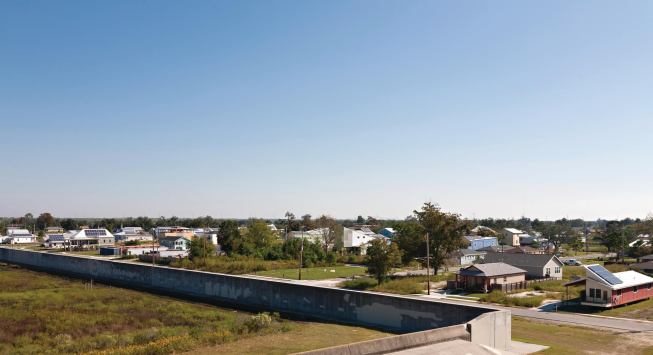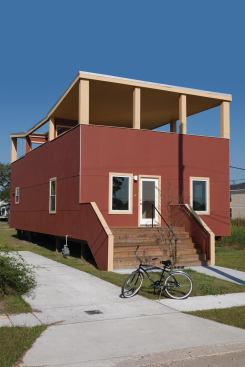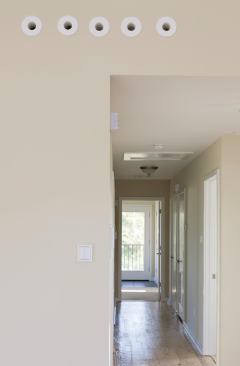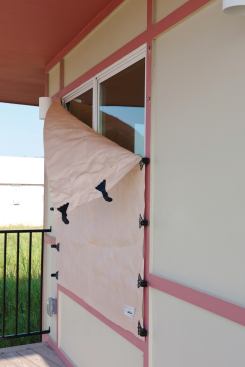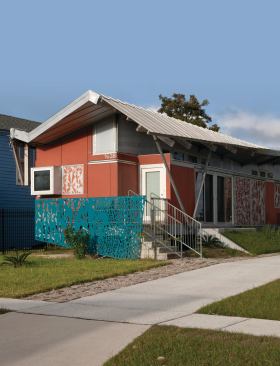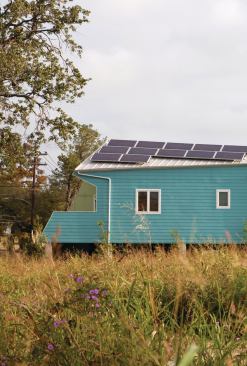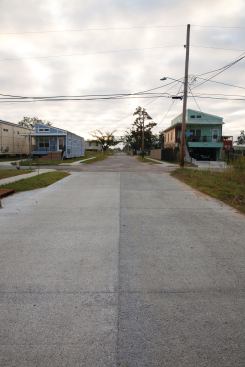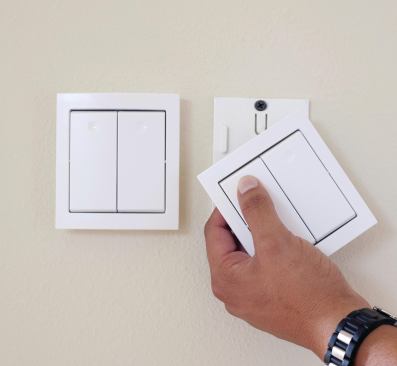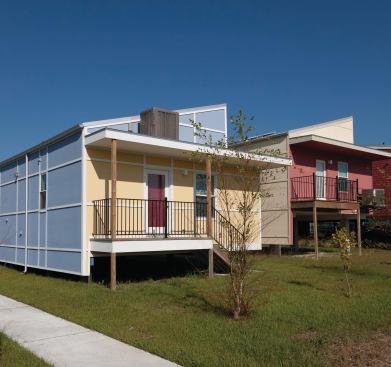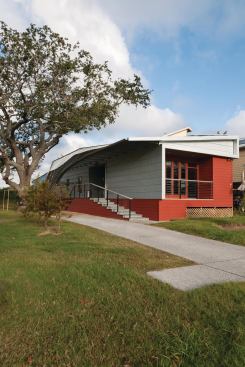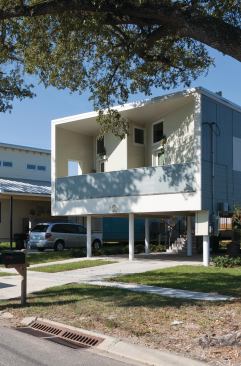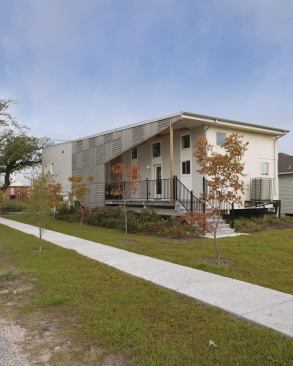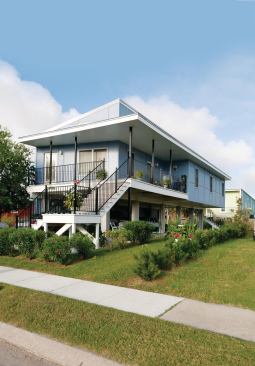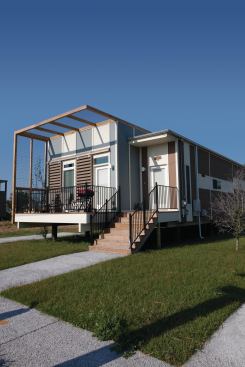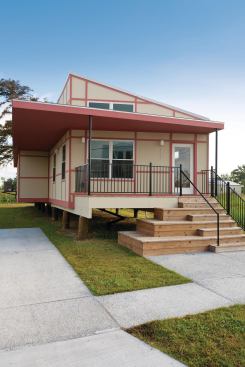Sara Essex Bradley
Triumph From Tragedy As of mid-2011, Make It Right has built 75…
Pierre Moses pulls out a smart phone and taps an app that displays the real-time performance of every solar array in the neighborhood. That capability allows him to verify and document the conversion rate of the cells, which helps the systems qualify for the state and federal tax credits that combined to offset purchasing and installation costs up to 80%.
Earlier that morning, the program also alerted him to a ground fault glitch on one of the arrays before it even made a blip on anyone else’s radar. “We can identify and fix problems before they show up on someone’s bill,” he says.
Moses also shares that information with the legion of solar panel, inverter, and supporting component suppliers and installers he manages through Make It Right Solar, a for-profit spin-off of the foundation created to gain tax credits and other subsidies (non-profits are exempt) and serve as a separate knowledge and profit center for a burgeoning local solar industry.
Homeowners also get a peek at the solar monitoring program. “If you give them access to data, it always reduces energy use,” he says, noting that some have installed their own energy monitoring systems. “The more you show them, the more they want to improve.”
Though no MIR homes are specifically designed to achieve a net-zero energy balance, a few residents have adjusted their lifestyle habits enough to meet that mark. “We have some people paying only the monthly connection fee for electricity,” says Rodriguez. The average bill hovers around $50 a month, a 75% reduction from what most were paying pre-Katrina. “The house is no longer a burden to own and operate.”
Examples like that are what’s likely to sustain Make It Right’s mission and inspire others to follow, both in the Lower Ninth Ward and beyond, Darden says. “If we can figure out how to do it in the worst-hot area, there’s no excuse for not applying these strategies to buildings everywhere.”
Rich Binsacca is a contributing editor to EcoHome. To learn more about Make It Right, including a full list of the products specified to achieve its high-performance goals, go to www.makeitrightnola.org.
Rising Up
The Lower Ninth Ward has always been a front-porch community. Though they provided poor protection against a flood, the ranch-style, slab-on-grade homes that dominated the neighborhood before Hurricane Katrina were perfectly suited to that culture.
Returning residents and the Make It Right team were confronted with the dilemma of sacrificing that tradition for the sake of elevated foundations that would better weather another flood; all of the home designs call for a 5- or 8-foot clear space between grade and the living space—except one: the FLOAT House.
Designed by Thom Mayne at Morphosis Architects in Los Angeles, in collaboration with the UCLA Architecture and Urban Design graduate program, the FLOAT House sits at ground level thanks to its innovative prefabricated polystyrene foam-and-shotcrete chassis.
Like a floating dock, the chassis enables the entire 945-square-foot, shotgun-style house to rise up to 12 feet above ground level in the event of a flood. Two steel “masts,” each at one end, guide the chassis as it rises with the water; the masts are embedded in the 45-foot piers that anchor a pair of concrete pads on which the chassis sits.
Even better, the floating foundation contains all of the home’s mechanical runs, which are tethered to their respective services for up to 15 feet before snapping off at designated (and easily replaced) couplings.
Mayne and Make It Right are quick to point out that the FLOAT House is not designed for the occupants to stay in the house during a flood, but that it minimizes catastrophic damage, preserves the home’s integrity and value, and enables an easy and early return to a fully functional house after an event.
They’re also anxious to see the same concept replicated for other flood-prone areas in addition to the Lower Ninth Ward. “The whole thing is made in a factory and shipped to the jobsite on a flatbed,” MIR product coordinator Cesar Rodriguez says, including the foundation and the SIPs used for the home’s walls and roof. “It would be easy to mass-produce.”
